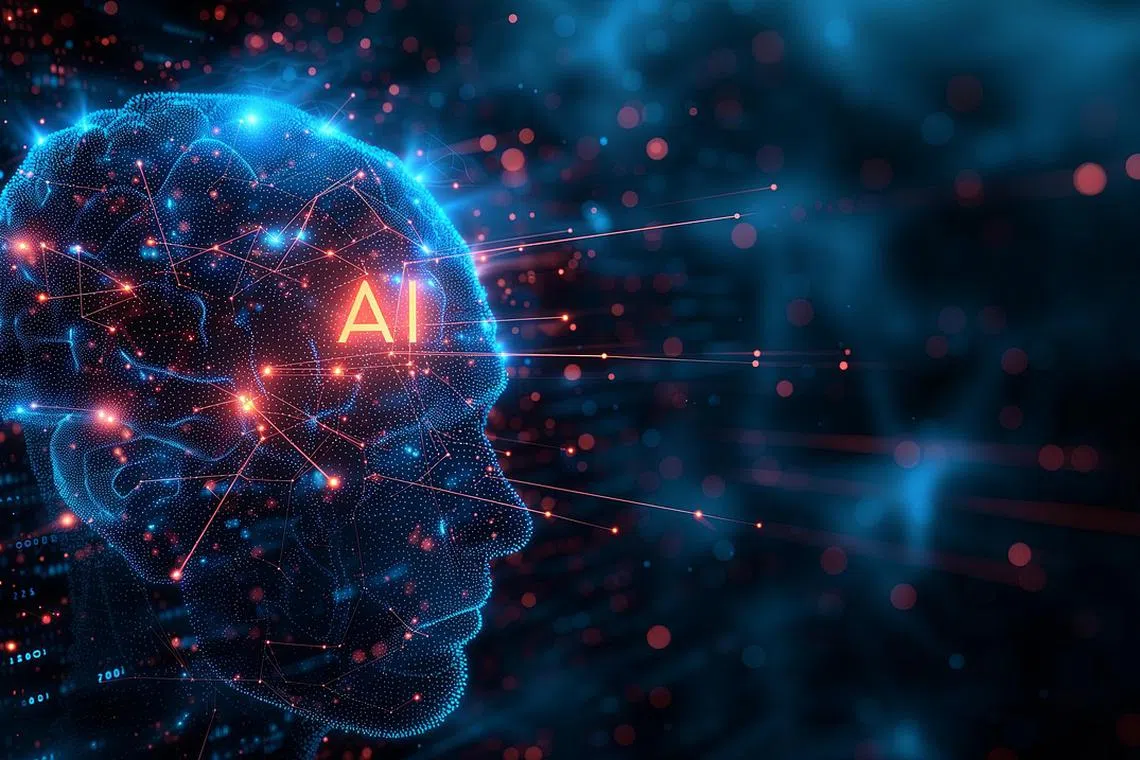Design AI: The next stage of AI evolution
SUTD believes this is how one will innovate in future; it is also how one will craft the future of innovation for economy and society

SINCE the introduction of the world’s very first electronic digital computer in 1946, mankind has been obsessed with the infinite possibilities of what “artificial intelligence” – as opposed to “human intelligence” – can achieve.
Countless books and movies have been produced in the last eight decades, as fact and fiction meld into one, and the prowess of computers are debated and explored.
Movies such as Minority Report and Terminator have achieved cult status, as their writers let imagination run wild, painting a sci-fi future that sometimes bordered on the absurd.
Until now.
As AI becomes more commonplace, questions that have plagued us since the advent of technology, have become more pertinent.
Will AI help mankind solve our biggest challenges, from climate change to food shortages and incurable diseases? Or will they turn on us and become our greatest enemy yet?
Are they, quite simply, friend or foe?
“There is no simple answer to this but the path AI will take over the next few years will depend on how humans interact with it, and how they put in place enough safeguards to ensure that AI is developed and used ethically and responsibly,” said Professor Tai Lee Siang, SUTD deputy president and chief innovation and enterprise officer.
Prof Tai, who is also chief judge in the inaugural Design AI and Tech Awards, jointly organised by The Business Times and SUTD, describes AI as a partner – one who is capable of exponentially increasing the quality and innovativeness of all solutioning.
SEE ALSO
New frontier for mankind
“Never before has there been a technology with such immense potential. The power of large language models opens up a whole new frontier for mankind. With great power, comes great responsibility and the time is for that is now,” he said.
Harnessing this power is why SUTD is making the pivot as the world’s first Design AI university.
Expectations are growing that AI can help solve many wicked problems.
Those who can design innovations from and beyond our imaginations with AI will always be in demand.
SUTD calls this Design AI – it is how one will innovate in future; it is also how one will craft the Future of Innovation for economy and society.

At the same time, key to the evolution of Design AI is how AI is regarded as a partner and not a tool.
“At SUTD, AI is a partner, a team member – not just a tool; we believe that by treating AI as a partner, we will be able to maximise the potential that it can offer,” said Prof Tai.
“Our human-centred pedagogy also ensures that AI is never used in isolation – it will always be seen through the human lens and developed in alignment with human values and societal benefits.”
He added: “This includes considerations like fairness, transparency, accountability, privacy and security. Essentially, it’s about optimising the positive impact of AI while mitigating risks and adverse outcomes.”
With Design AI, humans and AI work together to find solutions to real-world problems.
The difference between using AI as a tool and as a team player is that human team members no longer just instruct AI, they discuss, bounce ideas off it and co-create together.
At each stage of discussion, AI is able to elevate the solution several-fold so that the next stage of solutioning starts off on a higher plane.
The end result is one that is infinitely more advanced and innovative compared to one that was purely dictated by human intelligence.
An example of the power of Design AI is a newly-minted capstone project by SUTD final year students called Fitback, an AI-powered size recommendation plugin for online apparel businesses.
This innovative and commercially-scalable solution was the brainchild of Computer Science and Design graduate Michael Pang and his teammates – Gopal Guruprasath, Koh Chee Kiat, Lucas Goh Chen Ray, Muhammad Ilham Fadhillah, Yeo Chi Ning Tristan – who wanted to find a solution to the many ill-fitting outfits that online shoppers have to put up with on a daily basis.
Leveraging computer vision technology, the human-AI collaboration is able to accurately extract body measurements and map them to retailer-specific size charts, reducing extra costs associated with customer returns. The solution also featured iterative model refinement, real-time pose correction, and user guidance features that ensured practical usability.
“Working on Fitback was an eye-opening experience for my teammates and me,” said Pang. “We were happy with how we were able to blend human insight with AI capabilities to refine our model and prioritise the user experience.”
He added: “Every step felt like a collaborative effort between us and AI. Knowing how Fitback can drive both business value and positive social impact is something I’ll carry with me long after this project is completed.”
AI-human team interactions
More of such AI-human team interactions are expected with SUTD’s Future Human-AI powered Classroom of the Future where SUTD faculty, students and staff prototype different AI assistants as part of cohort learning.
For example, a cohort class can have four AI assistants – that together with the instructors – interact with the students to develop their research, design, observation, and interview skills.
Humans and AI will work together as a team to find solutions. Even students without technical backgrounds can now also create working quality prototypes or solutions that meet industry standards.
This is very different from just giving students AI tools.
This platform allows for “independent thought” by the AI so that it can offer constructive feedback and suggestions to its human team partners – resulting in a more robust outcome.
Decoding Asia newsletter: your guide to navigating Asia in a new global order. Sign up here to get Decoding Asia newsletter. Delivered to your inbox. Free.
Copyright SPH Media. All rights reserved.











